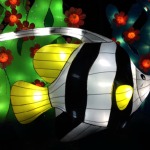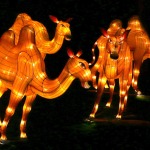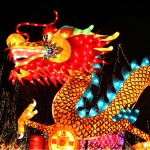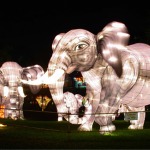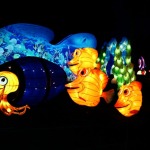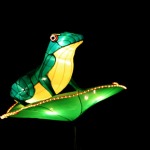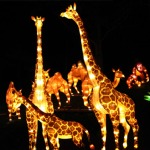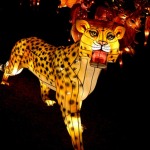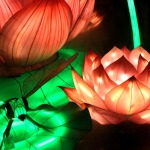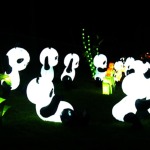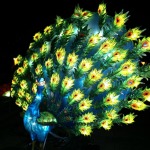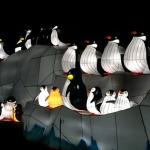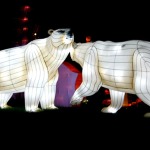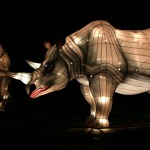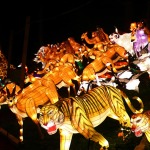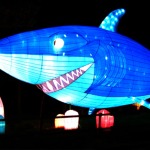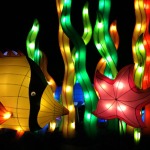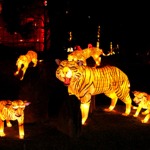Please make your Selection and Contact us to receive a Quotation: gci@chinahong.com
***
TO KNOW MORE ABOUT CHINESE LANTERNS
Chinese Lantern Festival – what’s it all about?
The Lantern Festival has been part of Chinese New Year celebrations since the Han Dynasty (206 BC- 221 AD). Usually held on the 15th day of the first month of the lunar calendar, it marks the end of New Year festivities.
 Lantern depicting dragon boat racing, which originated in China more than 2,000 years ago
Lantern depicting dragon boat racing, which originated in China more than 2,000 years agoIt is said that the holiday evolved from an ancient Chinese belief that celestial spirits could be seen flying about in the light of the first full moon of the lunar calendar. To aid them in their search for the spirits they used torches. These torches gave way to lanterns of every shape, size and colour.The Lantern Festival is also popularly referred to as the Chinese Valentine’s Day because in days of old it gave girls and boys a rare chance to go out in the evening and mingle. Today, lantern festivals are held each year in China, Hong Kong, Singapore and Taiwan to mark the end of Chinese New Year celebrations. Competitions are held to select the best lanterns.
The lanterns
The lanterns come in all shapes and sizes. Some are created in the form of animals, insects, flowers, people or even machines or buildings. Others depict scenes from popular stories teaching filial piety and traditional values. A favourite subject is the zodiac animal of the year – the Goat in 2015.
Lantern riddles (cai deng mi)
Part of the lantern festival tradition involves a game to guess riddles attached to the lanterns. In the old days the riddles were obscure literary allusions to the Chinese classics and so were mainly the preserve of the educated classes.
Special foods
Like most Chinese festivals, the Lantern Festival has its own special food, called “tang yuan”. These are round, glutinous rice dumplings with sweet or spicy fillings. The dumplings are said to symbolise both the first full moon and family unity and completeness.
Entertainment
Stilt-walking, drumming and dragon and lion dancing are all traditional forms of festival entertainment. In Asia, it is not uncommon to see processions of hundred-foot long dragons, lit with flashing eyes and luminous bodies, accompanied by pounding drums, cymbals and brass instruments.
The dragon dance
The traditional dragon dance originated in ancient China, and was already a popular activity by the Sung Dynasty (960-1279 AD). It is still an indispensable and popular part of most Chinese festivals, especially at Chinese New Year. Chinese people traditionally revere the dragon, which symbolises strength, good fortune, wisdom, longevity, and nobility.
The lion dance
 A lion dance at the Auckland Lantern Festival
A lion dance at the Auckland Lantern FestivalThe lion dance is supposed to bring good luck and is one of the most spectacular of New Year traditions. It is performed by two dancers: one at the head and one at the tail of the Lion. The dance itself is a very careful demonstration of stylised movements – a martial art in itself. To make the lion more life-like, the eyelids, mouth and ears of the lion usually move. The use of firecrackers, drums, gongs and cymbals are meant to dispel evil spirits and bring good luck.
Other Chinese New Year traditions
Like all Chinese festivals, the date of the New Year is determined by the lunar calendar rather than the Western (Gregorian) calendar, so the date of the holiday varies from late January to mid-February. In 2012, the new year began on January 23.
New Year festival preparations start during the last few days of the last moon. People thoroughly clean their houses (but not on New Year’s Day), repay debts, cut their hair and buy new clothes. They decorate doors with vertical scrolls of good luck characters on red paper. Incense is burned in many homes and also in temples as a mark of respect to ancestors.
On New Year’s Eve houses are brightly lit and a large family dinner is served. In the south of China sticky-sweet glutinous rice pudding called nian gao is served, while in the north the steamed dumpling jiaozi is popular.
Most celebrating the festival stay up till midnight, when fireworks are lit to drive away evil spirits. New Year’s day is often spent visiting neighbours, family and friends. One very important tradition is the exchange of gifts. Family and friends give small red envelopes filled with “lucky money” to children (the colour red brings good fortune).
The public holiday for New Year lasts three days in China, but the festival traditionally lasts till the 15th day of the lunar month when the Lantern Festival is held.

